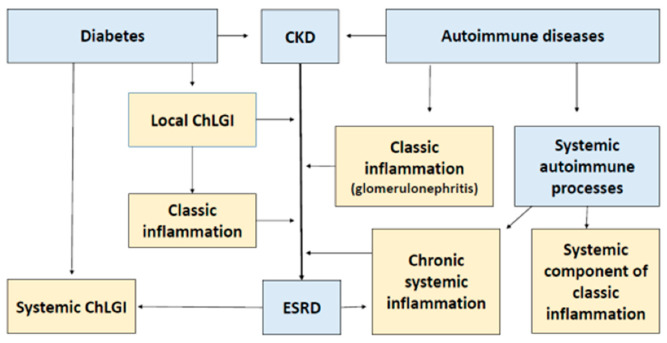Figure 3.
Relationship among the root causes of chronic kidney disease (CKD), end-stage renal disease (ESRD), and general pathological processes. On the left side of the scheme, diabetes mellitus and hypertension (against the background of obesity and metabolic syndrome) contribute to the emergence of a systemic proinflammatory status of the chronic low-grade inflammation (ChLGI) type. Simultaneously, pronounced local manifestations of ChLGI contribute to the development of CKD. In DKD, ChLGI is frequently transformed into alterations that resemble the classical variants of inflammation. These processes also lead to ESRD. ESRD, in turn, is an obvious inducer of changes in the proinflammatory status of the body according to the variant of chronic systemic inflammation (ChSI). On the right side of the diagram, many autoimmune diseases are associated with primary and secondary chronic glomerulonephritis, characterized by fibrinous productive variants of canonical inflammation and CKD, which can progress to ESRD. In some systemic autoimmune diseases, especially in systemic lupus erythematosus, secondary manifestations of chronic glomerulonephritis and primary (before ESRD) development of ChSI are noted, which additionally contribute to the progression of CKD to ESRD with the formation of a vicious pathogenetic cycle.

